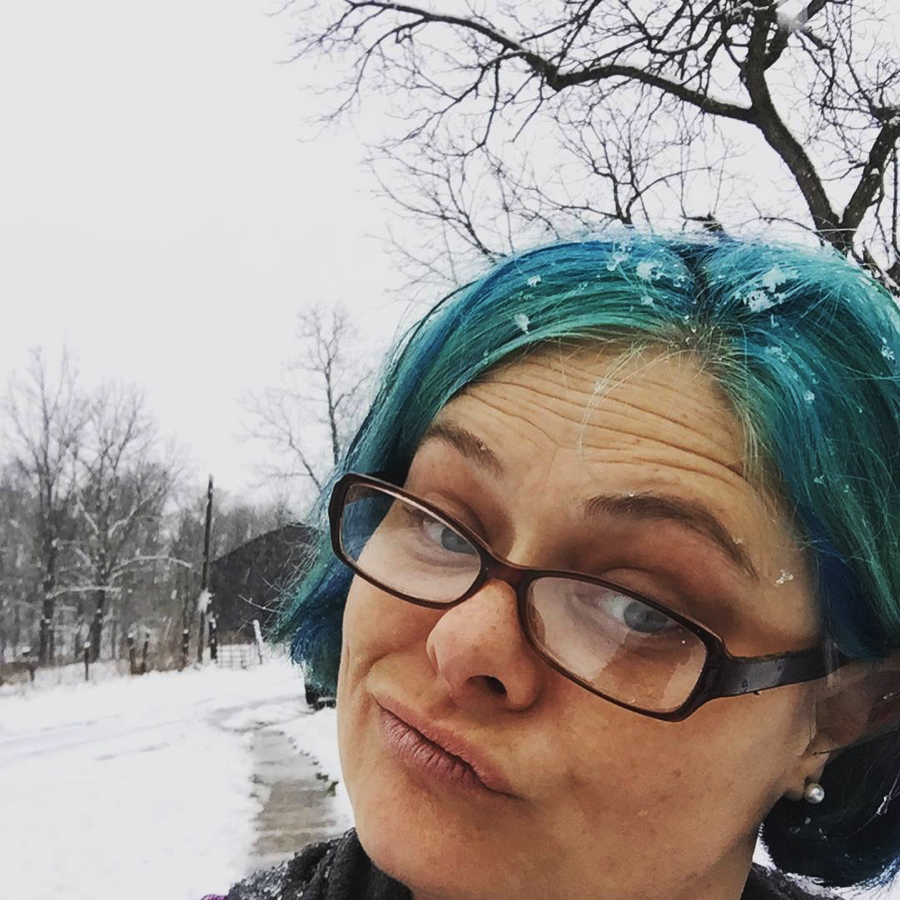Second Sunday in Advent
Adult and Small Child
Elsa Cook

Elsa Anders Cook is an ordained minister in the United Church of Christ who has served churches in New York, Maine, Washington and Pennsylvania. She volunteers at church now while supporting her husband in his service as a Major in the United States Army. Together, they have a toddler and a baby on the way. She blogs at cookingwithelsa.org.
Read: Romans 15:4-13
Reflect: No matter what happened in the early church (and there was a lot that happened and a lot that didn’t happen since they were expecting the end of the world), it was most important to live in harmony. This might be another time to break out the dictionary or even call upon some musicians who might help your children understand how harmony works musically. Harmony, in the early church, meant “welcom[ing] one another… as Christ welcomed” us. (Romans 15:7, NRSV) It meant welcoming others so that they felt filled with joy and peace. Explore with your children how they might make others feel so welcome. Who needs that welcome most right now? What could they do to welcome as Christ welcomed?
Respond: If your Advent calendar doesn’t give a particular opportunity for welcoming, call your church to inquire if someone might need a meal delivered or even a visit. Make it a family project this week to welcome that person with love. Deliver the meal together and pray that your actions filled that person with joy and peace. If haven’t yet decorated your home for Advent, this week might be the perfect opportunity to unpack the family creche. Set aside the baby Jesus, who won’t appear until Christmas, and talk about what each person at that nativity hoped to
welcome in the coming of Christ. You may also choose to move Mary, Joseph and the magi around the room as they get closer and closer to Bethlehem.
- Elsa Cook
Adult and Elementary
Rachel Jones

Rachel Jones is the associate editor for Forward Movement. She and her husband live on a farm with a dog, too many cats, several rabbits, and a flock of very opinionated chickens.
Read: Matthew 3:1-12
Reflect: Here's one of the wonderful things you learn in the Bible: Every single family has That One Relative, the one who prompts questions...the one you have to be reminded not to stare at...the one who stares at you for no good reason. In Jesus' family, That One Relative is John. No one is ever sure what he's going to say or if he's going to be nice or kind of loud and rowdy. But John is always showing up, saying things that make everyone in the crowd scratch their heads and wonder what's happening.
Jesus loves John. John loves Jesus. They are family and they spend a lot of time together. Jesus fully accepts John's differences, and John fully accepts Jesus. John's father is a priest in the temple, and like a lot of PK's, John spends a considerable amount of time hearing the stories of God, being expected to be in the temple when maybe other kids are off playing. And then one day, something changes for John and he goes into the desert. When he comes back into town, which isn't very often, John talks about unquenchable fire and repentance. No one in his family seems to understand him...but Jesus does. And John understands Jesus in a way that no one else does. Their relationship to each other and to God is one of our best examples of how to love and support each other in our similarities and our differences.
Respond: Spend some time talking about all the relatives and friends you will see during this season of long visits with family and friends. Share some stories that might sound like Jesus and John stories from you own childhood. Pay special attention to what your children share about what and who they are noticing in your family and community.
- Rachel Jones
Who do you need to welcome into your home during this Advent season?
Adult and Youth Cara Meredith is a writer and speaker from Seattle, Washington. Her memoir, The Color of Life: A White Woman’s Journey Toward Love and Justice, releases in 2019 (Zondervan). "I’m passionate about living life to the fullest, my faith, and issues of racial and social justice. And to me, storytelling is how all of this happens." You can connect with her on Facebook, Twitter and Instagram.
Cara Meredith

Read: Isaiah 11:1-10
Reflect: I don’t know about you, but winter is all around me. Whether or not snow dusts the ground where you live, I bet you can see winter’s signs in nature: the sky is darker (and gets darker earlier each day). The soil is hard, frost-bitten, seemingly dead. An eerie stillness fills the air, especially since all the birds have flown south for the colder months. In a way, the outside world doesn’t seem to be bursting with life, at least not in the obvious way it does in spring and summer.
But if the prophet Isaiah shows us anything, we are reminded that new life is always springing up in us, even when we are unaware. Out of the stump of Jesse came a shoot, which I sometimes picture as the most fragile, yet stubborn of shoots; then, from seemingly fallow ground, a branch exploded, growing and expanding skyward. The shoot, of course, was Jesus, who later stood “as a signal to the peoples,” (Isaiah 11:10, NRSV) but it does make me wonder what God’s growing in our hearts right now.
Respond: If you haven’t leaned into the Advent season with the Jesse Tree, then start now! Search for the symbols of the Jesse Tree online and make ornaments of these symbols. You can make lasting ornaments from sawed-off pieces of wood using the medium of paint or collage. Each ornament is a snapshot from Scripture, all 28 ornaments then telling the story of Christ. As you make the ornaments, talk about these questions: 1. Is there something in your life that once felt dead, but now feels like it’s coming back to life, like a shoot out of the ground in winter? Tell us a story! 2. Look at the different ornaments for the Jesse Tree: which ornament most sticks out to you? Why?
- Cara Meredith
Adult and Adults Aretha Grant serves her local church as a bible teacher and elder. She loves writing and is the author of Overcomer: 25 Keys to Walking Victoriously. Aretha resides in Hagerstown, MD with her husband and two youngest children. You can read Aretha’s blog at www.arethagrant.com.
Aretha Grant

Read: Romans 15:4-13
Reflect: We read the Bible to instruct and encourage us. Through the Scriptures, we have hope. We have hope for a better tomorrow and an assured eternity with Christ. That hope should compel Christians to live in unity with one another despite our ethnic, cultural, or racial differences. When we offer up our differences to the Lord, God can use our differences to make harmony. I’ve always been fascinated with how sopranos, altos, and tenors singing separately sound good, but when they come together in harmony, they sound best. That’s how Christians are when we allow the Lord to use our differences for God’s glory. The Bible teaches there’s “one Lord, one faith, and one baptism” (Ephesians 4:5, NRSV). We are one in Christ. Let’s lay aside our differences and praise the Lord together. Lifting up one voice in hope glorifies God, and edifies ourselves and our brothers and sisters-in-Christ.
Respond: Do you know any Christians that are a different ethnicity from you? If so, invite them to lunch or dinner. If you don’t, maybe seek them out and get to know them. Attend a church service and praise the Lord with them. Listen to a Christian song in their native tongue and ask them to interpret the song for you. You could also invite someone who needs to know Christ’s love to your church and then share the love of Christ with them. Invite them to rejoice and praise the Lord with you.
- Aretha Grant
Download a printable copy of this week's devotions HERE.
Tags: Lectionary Based Readings & Reflections / Latest Posts

